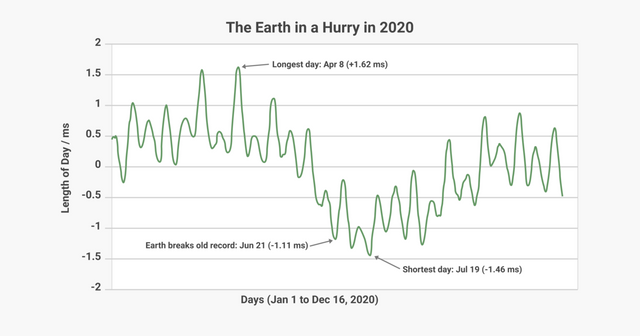Earth's Axis Now Shifting 17 Times Faster

Earth's geographic north and south poles—where the planet's axis of rotation intersects with its surface—are not fixed. Changes in where the Earth's mass is distributed can cause the axis, and the poles, to move.
Scientists say it is estimated that since 1980, the poles' positions have moved about 4 meters (13 feet) eastward.
Researchers analyzed data from the Gravity Recovery and Climate Experiment (GRACE) satellites, which have tracked polar drift since 2002, with their modeling before publishing the results.
Experts said they found the direction of the poles moved from southward to eastward in the mid-1990s and that the speed of the drift between 1995 to 2020 was upwards of 17 times faster than it was in the years between 1981 and 1995.
Vincent Humphrey, from the University of Zurich, says the shifting of the Earth's axis could change the length of a day by milliseconds, but it's not large enough to affect daily life.
Earlier scientists pointed out that 2020 had the shortest days on record. 2021 is predicted to be even shorter.

Variation of day length throughout 2020. The length of the day is shown as the difference in milliseconds (ms) between the Earth's rotation and 86,400 seconds